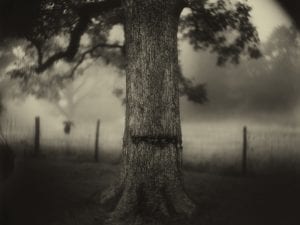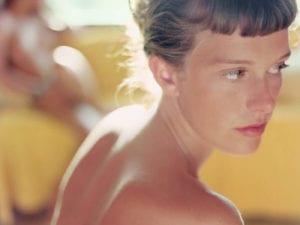Ahead of its official opening on 18th June, Aesthetica speak to Francesca Genovese about The Francesca Maffeo Gallery, an independent photography gallery for Contemporary and Historical photography, based in Leigh-on-Sea, Essex. Named in honour of Francesca’s grandmother, the space will host up to six photographic exhibitions per year, showcasing the work of both emerging and established contemporary photographers.
A: The gallery is noted in its aims to provide a welcoming space to experience, acquire and collect both contemporary and historical photography. Could you talk a bit about how these processes differentiate and how you think emotions are attached to each of these strands?
FG: For me there is an overlap in these processes, the experience really is the foundation of the gallery ethos, I felt a strong commitment to establishing a space where visitors could experience a range of photography, to be able to engage with it, to ask questions, to learn something. Naturally emotions are attached to this, photography is a very powerful medium, and to engage with it is always a very personal activity.
The “acquire” relates to the acquisition of knowledge and the provision of education which really is at the core of the gallery aims, through artists’ talks and interactive workshops we aim to incorporate learning opportunities into each exhibition as well as support and guidance for students and photographers.
The gallery does share many of its aims with that of a public space, it is important that visitors feel able to enjoy the exhibitions and entry is always free in this respect, it will host up to 6 exhibitions per year, engaging with a variety of themes through solo and group shows. Yet, the gallery and print room will offer all works for sale and function as a commercial gallery, hence the “collect” is an essential element and will support photographers and promote the collecting of photography.
A: Was there a sense of a journey in creating this gallery? Is there one particular moment of inspiration which you can relay?
FG: Well of course, it has been a very long journey. I knew that setting up a gallery was something I hoped to do and embarking on a career as both a photographer and lecturer was essential to the gallery model I have established. I have spent 17 years managing and developing photography courses in FE & HE and the passion and joy I have seen in my students, my peers and my colleagues when making images never tires. Quite simply, my love of the medium is what has driven the project. I don’t think there is just one moment of inspiration; it is a culmination of a number of recent experiences and life changes, which cemented the drive to set up Francesca Maffeo Gallery.
A: Many galleries become a space with memories or impressions attached to them or projected onto them. As the space is founded with direct reference to your grandmother, could you expand on how the space is, perhaps, reflective of a particular aspect of your life which you’re longing to share with others?
FG: My grandmother was a formidable woman; she passed away just before I graduated in 1998. I have always felt a strong connection to her, so perhaps it is inevitable that the space will become just that, a space with memories and impressions attached.
My own personal practice and area of research is situated within the family album and memory, my home and my family is very much an influence to the design and the feel of the space. I want the gallery to have a welcoming domestic feel, somewhere where you feel relaxed and able to take the time to enjoy the exhibitions and comfortably explore the reference library and the Print Room.
A: As the provision of education is the leading force behind the gallery, what is it about learning that you find so fundamental in the practice of art and photography?
FG: I believe that access to the arts and arts education is fundamental, it provides entertainment, escape, therapy and so much more. I have worked with students of all ages, individuals who have been moved by work, changed by access to this knowledge, I have seen young people thrive in amongst the creative arts environment. In addition to this there are graduates, practicing artists and photographers who need access to support beyond their studies, beyond their commercial work. Sharing ideas and having a space to articulate and develop the work is something that is essential and the education programme I have developed hopes to provide this at all levels.
A: With opportunities for students to seek support and guidance, the space in many ways upholds the sense of community in the arts industry. Is this something that you think should happen in more galleries? Are you trying to diminish perhaps a segregation between emerging and established artists?
FG: I believe there are already a number of galleries that uphold a sense of community in the arts industry; certainly here (Leigh on Sea, Essex) we have a wonderful resource in Focal Point, Metal Culture & TAP. There are also many spaces in London which offer opportunities for support and guidance and are doing a wonderful service, yet there are so many talented photographers, and I feel, too few photography dedicated spaces that I hope Francesca Maffeo Gallery is a welcome addition to support a growing industry.
In terms of segregation between emerging and established artists I do feel that the lines are already blurred in this respect. Yet I am passionate about providing a mentor programme and other opportunities for graduates and photographers at the outset of their careers with some very exciting programmes currently in development.
A: How does Spencer Murphy’s work fit in with the sense of experience and collection which you’re trying to portray? In other words, does his work have a particular sense of thematic or conceptual concern which matches your own?
FG: The work I have selected for Ephemera explores the quiet process of photographing – passing through spaces and places, transitioning with the camera, being still. Its is peaceful, beautiful and thoughtful work, for me it articulates the experience of photographing, certainly a fitting beginning for the gallery. The exhibition continues a theme evident throughout all of Murphy’s work: a poignant relationship to time, and in this you could say it matches my own conceptual concerns.
A: The title of the exhibition, Ephemera, perhaps makes reference to the earlier sense of collection which you highlight. Do you think that there is a sense of transporting ourselves from the ordinariness of our daily lives into the gallery space and finding beauty or communal resonance in collected objects?
FG: When the title was proposed I was reading Sally Mann’s memoir Hold Still and was immersed in her journey through the rediscovery of her own family ephemera. It presented itself as a somewhat serendipitous moment, a word synonymous with histories, with collecting, with the preservation of something fleeting and stilling. Ephemera is evidence; it gives us another way of looking, it is an exploration, of the unknown, of the forgotten.
Photography inherently has the ability to transport us, it is what makes it such a powerful medium, we may very well experience it in a “communal” way in the gallery space, but our experiences are always personal and independent, the “punctum” can only be our own.
The gallery will be open from 18 June. For more information visit www.francescamaffeogallery.com
Credits:
1. Installation view of Francesca Maffeo Gallery. Courtesy of Francesca Genovese.




